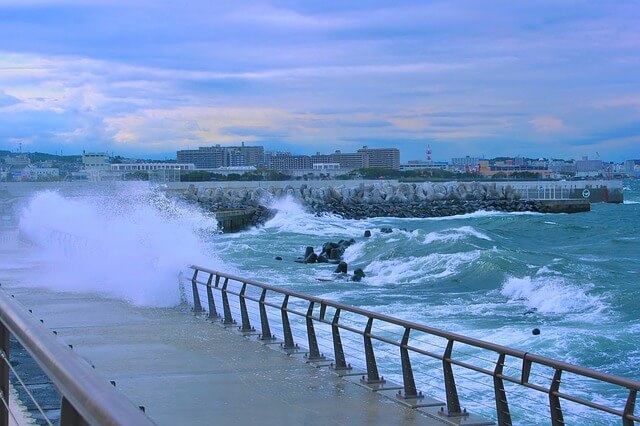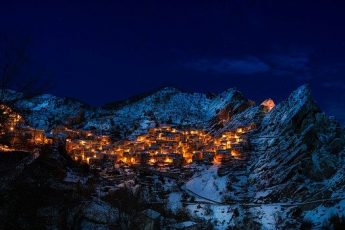The Japanese archipelago is heavily dependent on the typhoon season of the Pacific Ocean, which comes annually from May to October. The peak of the typhoon season in Japan falls on August and September.
In addition, several unpleasant typhoons can come to Tokyo in mid-late May. Tropical cyclones (low-pressure zones) arise over an overheated water surface in the tropical Pacific. In Japanese, this phenomenon is called the word “typhus,” from which the word “typhoon” was formed.
On average, 25 tropical cyclones attack 11 of the Pacific Ocean, 11 of which approach Japan, and 3 attack the Japanese archipelago. In recent years, typhoon seasons in Japan, they began to take place more dramatically. On average, at least 30 storms happen per season, including the so-called “super-typhoons” with a steady wind of more than 240 km / h (150 mph).
The word typhoon is a standard international term for hurricanes that occur in the North Pacific
Each season, the Japanese hydromet center gives each typhoon a number instead of a name, starting with “Taifu 1”.
The country has well-developed weather forecasting technologies that help predict the likely date, nature and power of each hurricane.
The dangers
Japan has a sufficiently powerful infrastructure to protect coastlines from storms. However, typhoons are a real threat, and deaths occur quite often. The territory of Japan is very mountainous, and heavy rain accompanying a hurricane can cause landslides that can destroy entire settlements.
In case of danger, the government issues special warnings about heavy rain and threats of hurricanes. Officials may even initiate the evacuation of certain areas and settlements. The Japanese usually take seriously such warnings and behave accordingly to them. Of course, sometimes locals ignore orders, but it is not common for such obedient Asian nation.
Lifeguards forbid surfing in the hurricane because of huge and dangerous waves
Going for a walk near the coastline during a hurricane is a very bad idea too.
There are frequent deaths of curious people who went to the beach during a hurricane to look at high waves. In urban areas, hurricanes demolish loose objects in their way, such as bicycles, and can also uproot trees and road signs. These items, carried at high speeds, can cause serious injury, so it is best to stay indoors.
It is curious that in the center of the typhoon, the wind is almost absent, and cloudiness is scarce. This phenomenon has a name of the “eye of the storm”. After a typhoon, broken glass, torn wires and other dangerous things can be scattered on the streets. That is why it is very important to cautious.
Journey to the typhoon season
The paradox is that the typhoon season usually comes on the best months to travel to Japan. If a typhoon approaches Japan during your vacation, you may encounter bad weather because the Pacific Ocean is stormy. If a typhoon falls directly on the area where you are, the best solution would be to stay indoors for about a day. Domestic flights and trains may be canceled. International flights are generally more priority. They can be a little delayed, in more rare cases canceled.
Typhoons tend to lose strength as they move north
As a result, typhoons that strike southern Japan, such as Okinawa, Shikoku, and Kyushu, tend to cause the most damage. It is for this reason that some travelers avoid traveling to Okinawa during the peak typhoon season.
As a result, the market offers many tourist routes to Okinawa in August and September at very attractive prices. So, this can be a bargain if the hurricane does not come. In most of Japan, August is the most expensive month for tourism, despite the risk of a hurricane. In August, many interesting events and festivals traditionally take place.
After the hurricane
The Japanese expression “taifu Ikka”, literally meaning “the typhoon that once passed”, is used to denote the good weather that often occurs after the typhoon. The air seems incredibly fresh, and the sky is unusually clear and sunny. There is a feeling that the storm cleared the air of dirt.
Surfers can enjoy the waves for several days after the storm – they are smooth and transparent
When the short typhoon season ends, “golden autumn” comes to Japan in early October. The main event of the autumn is the admiration of red maples “momiji”. This event causes no less excitement and excitement than the spring flowering of sakura. It does not rain often in autumn. The weather is calm and offers walks in Japanese gardens. The ideal months to enjoy autumn Japan are October and November.








